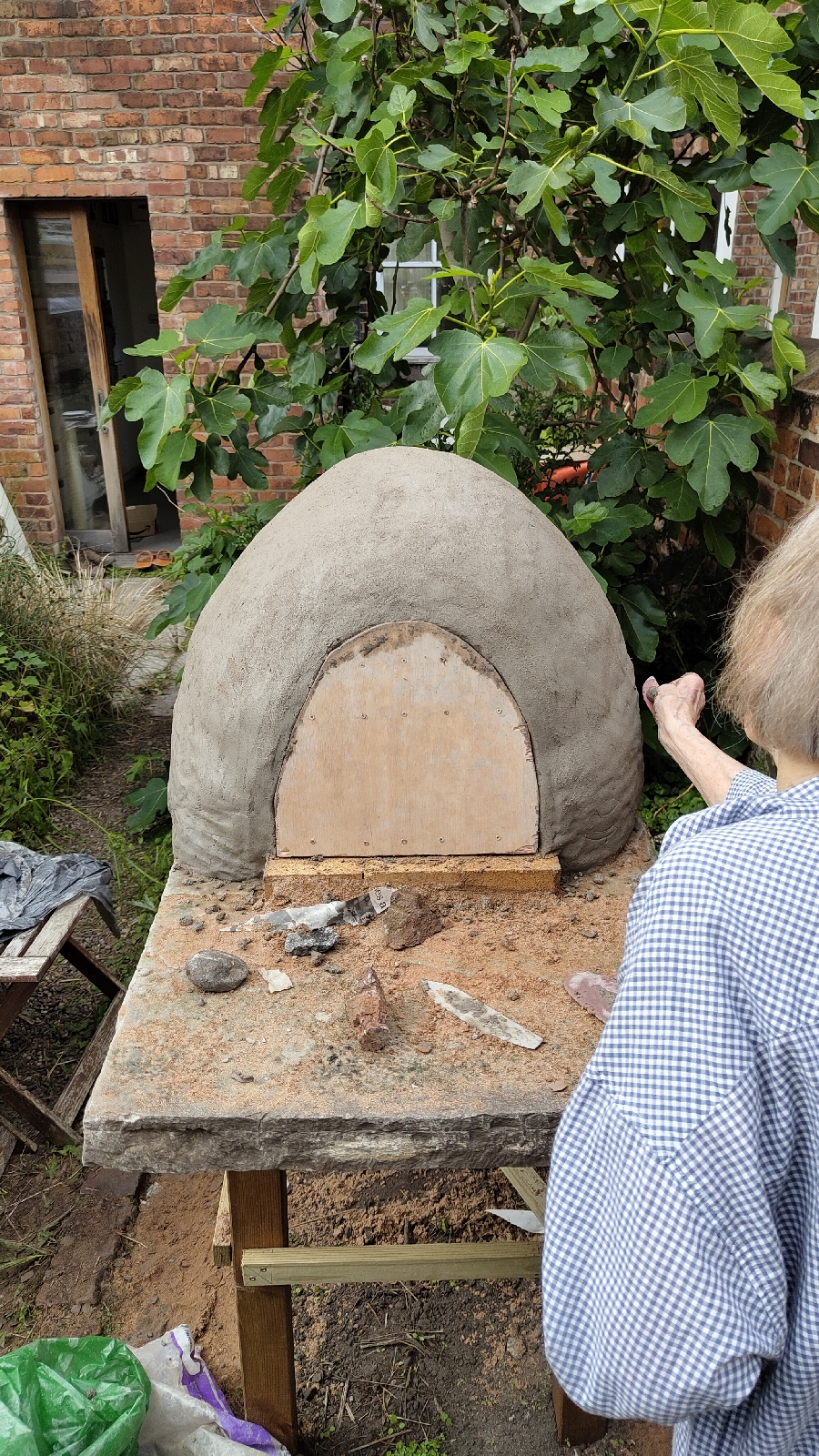 |
| Finished loaf |
Ingredients
- 500g strong white bread flour, plus a little extra for dusting
- 7g salt (about one teaspoon)
- 5g instant dried yeast (about one teaspoon)
- 350g warm water (around 30 degrees Celsius)
Utensils
- large mixing bowl
- scales
- oven
- baking tray or baking stone
- clean tea towel
- sharp knife
- small ovenproof tray or dish enough to hold half a cup of water (optional)
- a board or baking tray without a lip on it to act as a peel (optional)
- dough scraper (optional)
- sturdy spoon (optional - you can just use your hands)
Method
- Add all the ingredients to the bowl and bring them together with your dough-scraper or a sturdy spoon. You should end up with a shaggy sticky mess that's kind of evenly combined.
- Knead the dough, it will be a big sticky mess DO NOT ADD ANY FLOUR, the key to getting a light bread is to use a wet dough, adding flour will make it denser. The technique for kneading it requires some practice but it's quite fun, if messy. There's a bit too much to go into here but this is a link to a video explaining it in some detail.
- Once you've kneaded the dough form it in your to a ball, lightly flour your mixing bowl, put the dough back in it and cover it with a damp tea towel, a plate or some cling-film.
- Place the covered bowl in a warm place (around 25 degrees celsius) and leave it for an hour.
- The dough should have risen appreciably, anywhere up to doubling in volume. Now we're going to fold the dough, a kind of miniature knead that helps give it structure and evens out the temperature etc. Rather that try to explain it, here's a video showing how it's done.
- Return your dough to your covered bowl and put it back in a warm place for another hour.
- Your dough should have about doubled from it's original volume by the time you return to it. Now we're going to shape it into a loaf shape called a batard, here's another video showing you how.
- Once it's shaped, flour your clean tea-towel, place your loaf seam-side down on it and gently wrap it in the towel to stop it drying out. Leave your loaf in a warm spot to prove.
- Put your oven on to preheat at 220 degrees celsius. If you have a baking or pizza stone put that in the oven to heat up.
- Wait for 30 minutes, check your loaf, it should have grown noticeably but not as much as doubling in size.
- (Optional - if you're precious about your oven you can skip this step) Boil a cupful of water in your kettle, pour it into your small ovenproof dish and put it in the bottom of the oven. This will keep your oven humid and make for a lighter, prettier loaf by allowing it to expand more before forming a crust.
- If you're feeling confident and have a baking stone in the oven:
- flour a clean board or tray without a lip on it, this is going to be your baking peel
- place your dough on the floured board, seam side down
- make a shallow cut in the dough along its length about half a centimetre deep and at about 45 degrees to the surface of the dough, you're trying to make a flap which will open as the bread expands in the oven to make it look nice
- being careful of the hot oven, slide the loaf from your peel onto the hot stone in the oven and close the door
- If you're not feeling quite so sure and don't have a hot stone in the oven:
- place your dough on a cold baking tray, seam side down
- make a shallow cut in the dough along its length about half a centimetre deep and at about 45 degrees to the surface of the dough, you're trying to make a flap which will open as the bread expands in the oven to make it look nice
- being careful of the hot oven, place the tray with the loaf on it in the oven and close the door
- wait 10 minutes then remove the dish of water from the oven.
- Wait another 10-20 minutes
- Carefully take the hot loaf (use oven-gloves) out of the oven and tap its bottom. If it sounds hollow and has a nice brown colour then it's done. Otherwise return it to the oven and test again in five minutes.
- Place the finished loaf on a wire rack to cool.
















